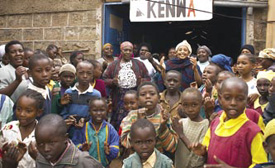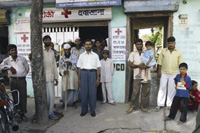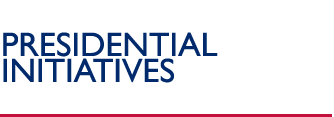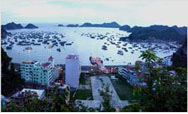 |
Global Fund to Fight AIDS, Tuberculosis, and Malaria

The Global Fund to Fight AIDS, Tuberculosis, and Malaria, established in January 2002, is an international public-private partnership that includes donors, recipients, affected people, and other stakeholders. The Global Fund was created to dramatically increase available resources and complement existing efforts to fight three of the world's most devastating diseases. It intends to rapidly direct those resources to effective prevention, care, and treatment programs in developing countries. It approves proposals submitted by country partnerships based on technical recommendations of a panel of international experts in public health and development, and it disburses money over time based on progress in achieving agreed upon targets. The U.S. is the Fund's largest single country donor.
Mongolia
- 175 urban and 110 rural volunteers were trained on Directly Observed Therapy-Short-course (DOTS) for tuberculosis.
- 1,703 (more than the target of 1,631) urban and 877 (more than the target of 805) rural patients were treated with DOTS by trained volunteers.
Morocco
- 3,400 (more than the target of 3,200) people are receiving HIV voluntary counseling and testing (VCT).
- 583 people are receiving anti-retroviral (ARV) therapy.

Reaching Out to Women with HIV/AIDs in the Nairobi Slums
The Kenya Network of Women with HIV/AIDS (KENWA) is a community-based organization formed and run by women living with HIV/AIDS. KENWA is currently reaching about 470,000 people through its country-wide membership of 2,430 women. With a $220,875 share of the $137 million two-year grant approved by the Global Fund to finance HIV/AIDS activities in Kenya, KENWA offers counseling, home-based care, and psychosocial support in some of the most deprived slum areas of Nairobi. KENWA runs six drop-in centers that serve as information, issemination, and counseling centers for the general public. These centers cater mainly to HIV-infected women and orphaned and vulnerable children.
- The Global Fund promotes local ownership and participatory decisionmaking through proposal development and implementation oversight by coordinating mechanisms at the country level. These country coordinating mechanisms include governments, NGOs, bilateral agencies, multilateral organizations, academic institutions, private businesses, and people living with HIV/AIDS, malaria, and tuberculosis. Progress toward lessening governmental dominance of these coordinating mechanisms and increasing the input and participation of all partners has been slow, but there have been success stories, such as in Haiti.
- The Global Fund stresses transparency, efficiency, and accountability. Flexibility is also important. The Global Fund has demonstrated willingness to change the Principal Recipient (PR), such as in Ukraine, if the PR is not handling resources effectively or achieving agreed-upon results.
- Because the Global Fund operates as a financial instrument and not an implementing entity, the roles of bilateral agencies and multilateral development and technical organizations in providing technical assistance in support of Global Fund programs are crucial to success on the ground.
- Programs initially approved in 2002 are now completing their second year of implementation. The Board will examine and approve continued funding for the next phase, based on results achieved against targets, and the effectiveness and inclusiveness of country partnerships in overseeing implementation. The next year will determine whether this promising new model of results-based disbursement can be effectively implemented. Successful implementation of this Phase Two renewal process is one of the most important issues into the next year and beyond.
Note: Results for this initiative were reported through USAID's consolidated reporting system
Back to Top ^
|


